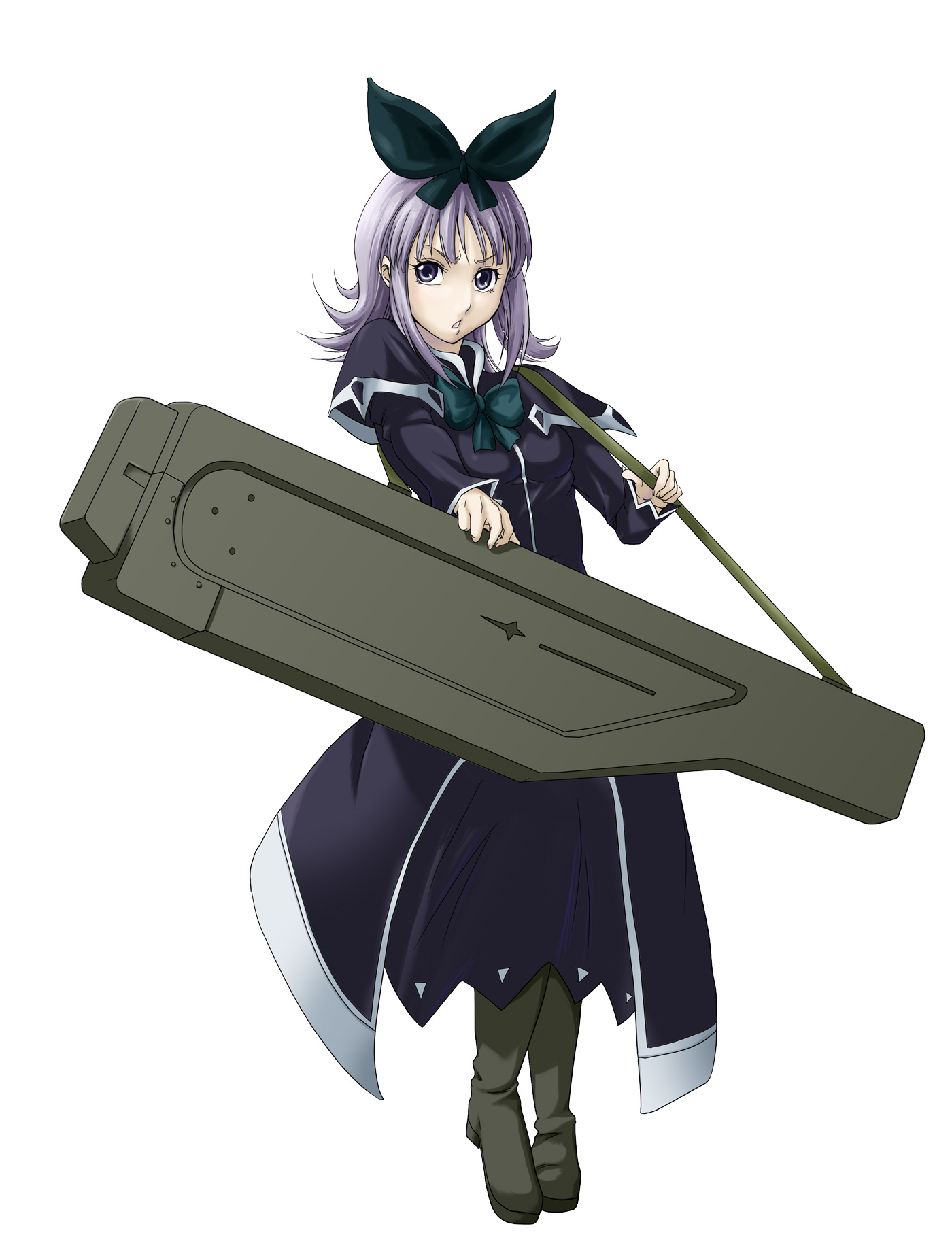The Tower Of Druaga Anime

Tower of Druaga is a two-season anime (Aegis of Uruk - 1st season; Sword of Uruk - 2nd season) that isn't anything spectacular, but manages to deliver great.
.: June 1984,Mode(s)Single-player, multiplayer (alternating turns)Upright, tabletop2x @ 1.536Sound1x Namco WSG @ 1.536 MHzDisplayVertical orientation, 224 x 288 resolutionThe Tower of Druaga is a 1984 developed and published in Japan. Controlling the golden-armored knight Gilgamesh, the player is tasked with scaling 60 floors of the titular tower in an effort to rescue the maiden Ki from Druaga, a demon with eight arms and four legs, who plans to use an artifact known as the Blue Crystal Rod to enslave all of mankind.
It ran on the arcade hardware, modified with a horizontal-scrolling video system used in.Druaga was designed by, best known for creating (1983). Inspired by games such as and, it was conceived as a 'fantasy ' with combat and puzzle solving, taking inspiration from,. It began as a prototype game called Quest with interlocking mazes, revised to run on an arcade system; the original concept was scrapped due to Endo disliking the heavy use of role-playing elements, instead becoming a more action-oriented game.In Japan, The Tower of Druaga was widely successful, attracting millions of fans for its use of secrets and hidden items.
It is cited as an important game of its genre for laying down the foundation for future games, as well as inspiring the idea of sharing tips with friends and guidebooks. Druaga is noted as being influential for many games to follow, including,. In North America, the game was met with a more negative reception for its obtuse design, which many said was near-impossible to finish without a guidebook, alongside its high difficulty and controls.
The success of the game in Japan inspired several ports for multiple platforms, as well as spawning a massive franchise known as the, including multiple sequels, spin-offs, literature and an produced. Arcade version screenshot.The Tower of Druaga is an action role-playing maze video game. Controlling the knight Gilgamesh, the player must scale all 60 floors of the tower to rescue the maiden Ki from Druaga, an eight-armed and four-legged demon who plans to use an artifact called the Blue Crystal Rod to enslave mankind. Gilgamesh will need to locate a key on each floor in order to open a door, allowing him to proceed to the next floor.Each floor contains enemies that Gilgamesh may need to defeat to progress, such as slimes, knights, projectile-firing wizards, ghosts that can travel through walls and fire-spewing dragons. Gilgamesh can defeat these enemies by hitting them with a sword — some will require multiple hits to defeat. Gilgamesh can also block a projectile by facing it with his shield. Each floor also has a hidden item that can be uncovered by completing tasks, such as defeating a certain number of enemies or inputting a specific code with the joystick.
These items include a pickaxe that can destroy walls, boots that will drastically increase Gilgamesh's walking speed, and a candle that can reveal ghosts. Some of these items are required to fully beat the game, and failing to do so will either cause the player to die or make the game unwinnable.A time limit is also present on each floor, and should the player take too long, two indestructible spherical enemies named 'Will-o-Wisps' will charge towards Gilgamesh. Should the player forget to get a required item, they will instead be sent back, or 'zapped', to an earlier floor to retrieve it. The game's mazes are randomized in each playthrough, although the treasure will appear at the player's starting point. Development and release The Tower of Druaga was designed by, who had joined in April 1982. After releasing a year later, an overwhelming success in Japan, Endo took a business trip to North America, where he bought a copy of. Intrigued by its gameplay and setting, Endo — a fan of the game — had set out to make his next game an action role-playing title.
After returning to Japan, he designed a basic prototype game called Quest, where the player would be able to explore inter-locking rooms while defeating enemies and using keys to open doors — an expanded version was then made to run on the arcade system, where it was titled The Return of Ishtar. Upon completion, Endo was dissatisfied with the game's heavy use of role-playing elements, leading to the game instead becoming an action-oriented game with puzzle solving, conceived as a 'fantasy '.For the second prototype, Endo took inspiration from, and, including. Several characters were named after Mesopotamian and Indian gods, including antagonist Druaga and the goddess Ishtar. The game was made to run on the same hardware setup used in, which featured horizontal-scrolling and had a vertical screen layout, while the 60 floors were inspired by the, the tallest building in Asia at the time. Music for the game was composed by Junko Ozawa. The promotional arcade flyer used miniature dioramas with cardboard cutouts instead of drawings, a response to Namco president 's hatred towards. The last frame in the poster has Gilgamesh wearing the horned helmet fighting Druaga, meant to imply that players would need it in order to finish the game.
 The initial amount of growth that each of them starts with might sway your decision more towards Otter as the top choice, then Robot next, and then Chocobear last.
The initial amount of growth that each of them starts with might sway your decision more towards Otter as the top choice, then Robot next, and then Chocobear last.
The Tower of Druaga was released for arcades in Japan in June 1984.Druaga was ported to several Japanese game systems, including the (1984), (1985) and (1985). A portable version was released in 1990, while a 16-bit remake for the in 1992. The GB version was re-released in 1996 as part of the compilation title Namco Gallery Vol. 2, which also included,.
A 1997 Windows port was released as part of Namco History Vol. 2, alongside several other early Namco arcade titles.
In 2003, the Famicom version was re-released in Japan for the as a pre-order bonus for. Several Japanese mobile phone ports were released, the first of these being a 2002 version, followed by an release in 2003. In 2009, a digital version was released on the as one of the four launch titles for the Virtual Console Arcade service, alongside,. The Famicom version was released onto the 3DS Virtual Console in December 2012, which was exclusive to Japan.

Druaga would be included in several compilations, including Namco Museum Vol. 3 (1996), (2005), Namco Museum Virtual Arcade (2009) and Namco Museum Switch (2017). Reception ReceptionReview scoresPublicationScore4/103/10AwardPublicationAwardThe Best Game 13thIn Japan, The Tower of Druaga was an overwhelming critical success, attracting millions of fans with its use of puzzle-solving and action-oriented gameplay. It has been cited as an important landmark of the role-playing genre and helped lay the foundations for future titles.
Druaga has been cited as influential to many other Japanese role-playing games, including,. Druaga also helped inspire the idea of note sharing with other players.The Tower of Druaga was met with a more negative reception in North America, many criticizing the game's controls, high difficulty and design. Reviewing the Wii Virtual Console port, Dan Whitehead of referred to the game's design as 'diabolically obtuse' and criticized Gilgamesh's slow movement, notably with deflecting projectiles. Whitehead also criticized its hidden treasures for being too elusive and for only appealing towards dedicated players, although stated it was an interesting gameplay idea. Brett Alan Weiss of also criticized its hidden items, especially those required for later levels, as well as the player's 'wimpy' attack and time limit. Thomas of was the most critical of the game, lambasting its 'arbitrary, off the wall' item requirements, slow pace and high difficulty, calling it 'woefully boring and pointless' to play.
He also noted that the player would need a walkthrough in order to fully beat it. In a 2003 interview, Endo stated he had somewhat regretted making the game as difficult as it is, noting that it might have made players more 'paranoid' about finding secrets in games. Legacy Sequels and spin-offs The success of The Tower of Druaga would spawn a wave of sequels and spin-off games, collectively known as the series.
Four last things book by von cochem. The Four Last Things: Death, Judgment, Hell, Heaven von Cochem Martin on Amazon.com.FREE. shipping on qualifying offers. This work has been selected by scholars as being culturally important, and is part of the knowledge base of civilization as we know it. This work was reproduced from the original artifact. The Four Last Things: Death, Judgment, Hell, Heaven Kindle Edition by Martin Von Cochem (Author), Paul Boer (Editor). The Four Last Things: Death, Judgment, Hell, Heaven 1st Edition by Fr Martin Von Cochem O.S.F. (Author), Paul A.
The first was released in 1986, which was based on the original prototype for Druaga. It was developed by Endo's game company, and published by in arcades.
Taking place right after the events of the original, two players controlled Gilgamesh and Ki as they made their way to the bottom of Druaga's tower with the Blue Crystal Rod. In 1996 it was ported to the PlayStation as part of Namco Museum Vol. A Famicom prequel game, was released in 1988 — controlling Ki, the player was to make it to the top of Druaga's tower in search of the Blue Crystal rod, leading up to the events of the first game.A Super Famicom follow-up was released in 1994, The Blue Crystal Rod, also known as The Destiny of Gilgamesh. Gameplay was much different compared to earlier games, instead being a graphical adventure game with characters from the series. In 1996, two altered versions of the original game, Another Tower and Darkness Tower, were included as hidden extras in Namco Museum Vol. They were made to be much harder than the original game and altered the requirements for finding the treasure.
A spin-off, Seme COM Dungeon: Drururuaga, was released in 2000.In 2004, Namco partnered with to develop for the PlayStation 2, one of the few Babylonian Castle Saga games to be localized outside Japan. Part of the series, the game is notorious for its extreme difficulty, where death would revoke all of the player's items and half of their money. An online-based arcade game was released in 2005, Druaga Online: The Story of Aon, which was followed by a similar PC game in 2009, The Tower of Druaga: The Recovery of Babylim. A spin-off game, The Labyrinth of Druaga, was released for Japanese mobile phones on January 12, 2011. Related media In 1990, Namco produced a theme park attraction based on The Tower of Druaga for in Osaka, alongside. After the show's conclusion, it was then moved to Namco's Wonder Eggs amusement park in Tokyo in 1992, remaining there until the park's closing on December 31, 2000. A medal game was released for arcades in 2000, Sugoroku Adventure: The Tower of Druaga, which also featured characters from Namco's Valkyrie series.
Gilgamesh's red-striped shield and the Blue Crystal Rod appear as Sophita's alternative weapons in. The GameCube game features a gamemode inspired by the game, titled The Hole of Druaga. A Mii Fighter costume based on Gilgamesh was released for in 2015.An anime reboot series, was produced by Japanese studio and premiering on April 4, 2008, taking place roughly 60 years after the events of the arcade game. It was followed by a sequel series, The Tower of Druaga: The Sword of Uruk, premiering on January 8, 2009.